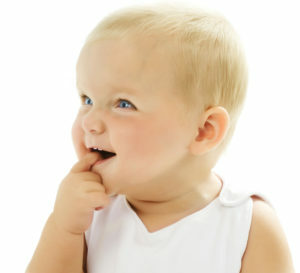 Teething is an unavoidable natural process that every toddler is carried absolutely in his own way.
Teething is an unavoidable natural process that every toddler is carried absolutely in his own way.
In order not to miss an important moment and help the baby in time, it is necessary to know what symptoms accompany this period and to what extent they can manifest themselves.
By the age of five months, most young parents are able to cope with "gazikami" and "colic", which are less and less concerned about the crumbs of this age.
But do not relax, because the next test is the next - the eruption of milk teeth, accompanied by various symptoms, including changes in the behavior of the baby.
How can we determine if a child will have a tooth or characteristic signs that indicate a treatment requiring treatment? Can vomiting, diarrhea and snot be a sign of a child growing up and erupting the first teeth?
Contents
- Common manifestations
- Common symptoms
- Local symptoms
- Features of canine eruption
- What symptoms require particular attention
- Temperature rise
- Presence of a common cold
- What does diarrhea indicate?
- Cough - often it's the norm
- Attention - vomiting!
- Hematoma on the mucosa of the gum
- Contact for expert help
- Questions to be resolved by the pediatrician
- Situations requiring a dentist's examination
Characteristic manifestations of
It is extremely rare for teething to pass unnoticed for parents who are already in fact ascertaining the appearance of the next incisor or canine. In most cases, the process so important for the development of the baby is clearly visible to others because of the combination of signs and symptoms related to behavioral changes and malfunctioning of the body.
General characteristics of
 During teething period the child shows:
During teething period the child shows:
- Sluggish , fast fatigue.
- Worry .Violated not only daytime, but also night sleep( crumbs can wake up, crying loudly).
- Babies who are used to sleeping in cribs categorically refuse to separate from their mother, the is constantly demanding to take them in the hands of .
- Aspiration is always something to chew or suck .In this case, the hands( often during this period the child begins to suck a finger), toys, things.
- Breastfeeding or bottles, unwillingness to suck a pacifier, changing the manner of sucking. The child, only pritozhivshis to the bottle or breast, immediately throws it, or, conversely, too actively sucks.
Local symptoms of
These include:
- Excessive salivation of .As a rule, high salivation is observed in children almost from the first months of life because of the inability to regulate the amount of saliva entering the mouth and small sizes of the mouth. During the eruption of teeth, too strong secretions are noted, to which irritation of sensory nerves leads. Saliva flows simply without stopping, thoroughly soaking the child's clothes.
- Digestive disorder , manifested in the form of regurgitation, vomiting. Often, these phenomena are associated with increased fluid intake to the baby, who constantly requires a breast or bottle, trying to calm his itching and painful sensations.
- Inflammation of the gums .It appears quite often in the form of redness and swelling of the gums. Such a sign means the rapid appearance of the tooth, which is already on the way to the surface of the gum. In the photo below, you can see how these gums look.
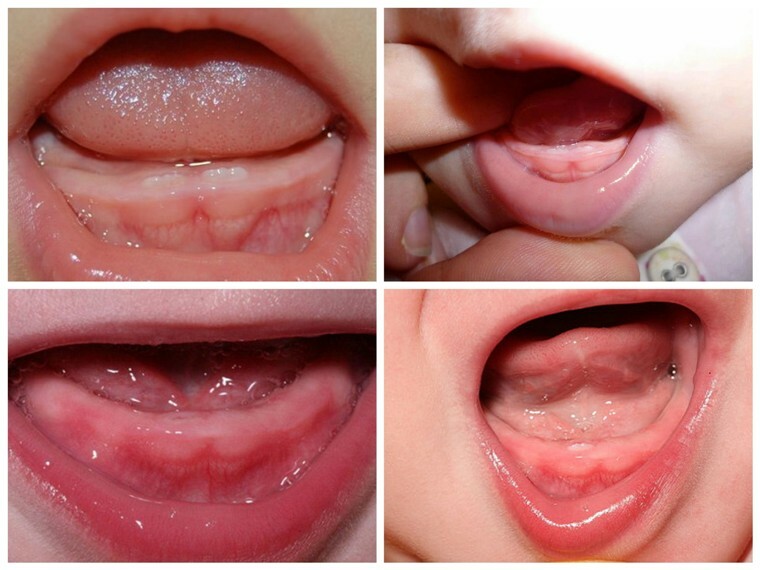
On the photo of the gum with the eruption of the first teeth
Features of the canine eruption
As a rule, the fangs of the toddlers are cut after they reach 16-20 months. Fangs appear on the lower jaw first, and then on the upper jaw. Symptoms of eruption of such teeth can be more vivid in comparison with the rest of the teeth. Often accompanying phenomena are:
- gum disease;
- redness of the skin around the lips and on the chin( due to irritation with saliva);
- increased excitability and nervousness.
Sometimes a gum can form on the gum at the site of the eruption of the tooth.
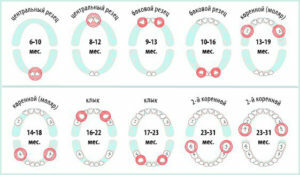
Diary of infant teeth in children
One of the problems for some parents is improper teething when the fangs appear among the first.
In such a situation, it is important to carefully examine the oral cavity of the baby to make sure that the whitish bumps on the gums are the future canines, and not the manifestation of stomatitis or the piercing lateral incisors, which at the beginning of growth often resemble fangs due to a prominent acute angle.
But even if the fangs appear first, do not panic - this will in no way be affected by the baby's health. The photo shows how the baby teeth are erupted in the correct sequence.
What symptoms require special attention
Parents need to be particularly careful in the following cases.
Temperature rise
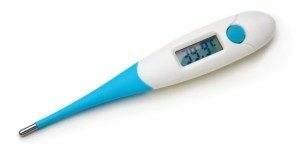 Increase in temperature is an individual factor, depending on the immunity of the baby and the characteristics of his body. In some, the temperature rises to only 36.8, while in others it reaches 39.5 degrees.
Increase in temperature is an individual factor, depending on the immunity of the baby and the characteristics of his body. In some, the temperature rises to only 36.8, while in others it reaches 39.5 degrees.
In this case, sudden changes are possible, therefore it is desirable to measure the temperature more often in order to respond in time to high values (in children under one year the temperature should be brought down more than 38 degrees).
This phenomenon is not a cause for panic if too high a temperature lasts no more than two days.
Presence of a common cold
This symptom often accompanies the appearance of regular teeth in infants. The so-called "dental" runny nose should last no more than three days, without disturbing the baby with abundant or thick secretions.
If the transparent "snot" is replaced by yellow or greenish, the consistency becomes thick, and the baby's breathing becomes difficult, the development of a bacterial complication or infection should be ruled out.
What does diarrhea indicate?
If a child has a disorder of the stool, it should be remembered that when teething, this phenomenon should not be accompanied by a swelling of the tummy, the appearance of pain when touched and the intestinal peristalsis changes.
To assess the changes, it is enough to put your hand on the baby's belly, assessing its softness, lack of "gurgling" sounds and soreness.
Cough - often the norm
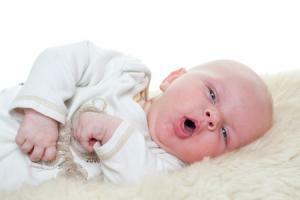 Slight cough with sputum is also considered as a characteristic sign of teething in babies. Coughing provokes a saliva accumulating in the child's throat.
Slight cough with sputum is also considered as a characteristic sign of teething in babies. Coughing provokes a saliva accumulating in the child's throat.
If cough becomes more frequent after 2 days, rales appear, medical help should be sought to exclude the development of ARI or infection.
Warning - vomiting!
This symptom is extremely rare. In this situation it is important to assess how frequent is vomiting, what consistency and appearance have vomit.
If vomiting accompanies teething, its frequency does not exceed 2 times a day, and it occurs against a background of high temperature.
In the presence of other conditions, vomiting may be a sign of intestinal infection or other digestive disorders, which can be diagnosed only by a pediatrician.
Hematoma on the mucosa of the gums
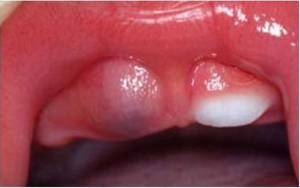
Hematoma when cutting the upper incisor
For parents, this symptom is the most intimidating. The hematoma, which is also called the eruption cyst, appears, as a rule, when the molars( premolar and molar) or canines are cut, which is difficult to break through the mucous membrane, which leads to tissue trauma and vascular rupture.
Externally, the hematoma looks like a three-dimensional formation of bluish or red.
Dimensions depend on which group the tooth belongs to, and how long it has been since the onset of the hematoma( it may grow over time).
Tips for parents from a pediatric dentist:
Contact for qualified help
Usually teething in babies does not require the involvement of a pediatrician or dentist. But in some cases, a specialist's consultation is simply necessary.
Questions resolved by the pediatrician
What are the symptoms that are unsafe and require the consultation of the district pediatrician:
- a long-standing temperature of more than 38.5 degrees;
- severe diarrhea, vomiting;
- increased excitability without other symptoms of teething.
Situations requiring examination of the dentist
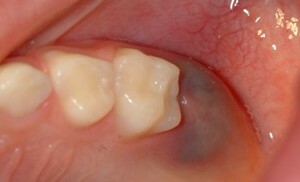
Here you can note only the appearance on the gums of the baby's hematoma, which in no case can not be treated independently because of the high probability of a negative scenario of events and getting into the surgical hospital. In this case, parents complain about the blue gum at the place of the eruption of the tooth( more often the root).
After a thorough examination of the hematoma, the dentist will choose the appropriate treatment option:
- If there is a minor , it is recommended to offer the baby solid objects( or food) that he can gnaw to facilitate breakthrough of the mucous membrane.
- In difficult situations, is used for surgical intervention of , dissecting the mucous membrane with special tools and rinsing the opened cavity. Mini-operation is performed under local anesthesia.
Due to the inability to independently assess the degree of danger of the hematoma, access to the dentist is an indispensable measure, since attempts to break or cut the mucosa at home can cause serious injury or even more inflammation due to infection.
